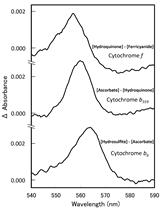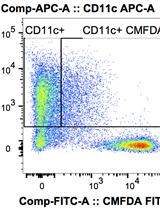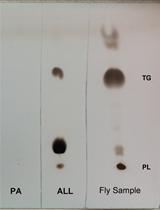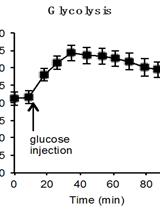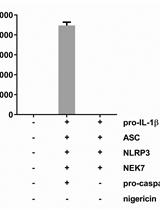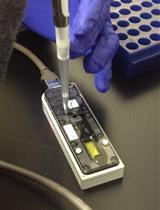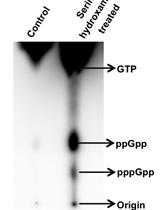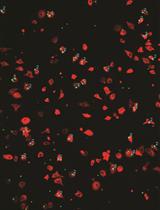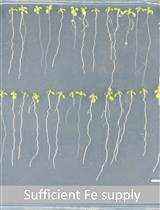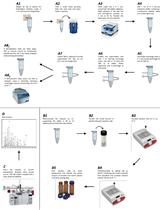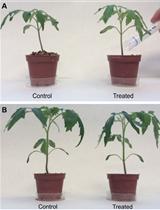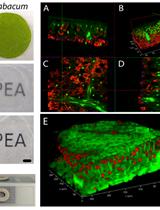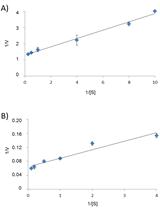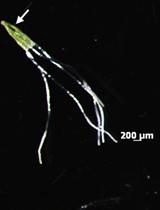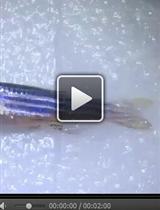往期刊物2016
卷册: 6, 期号: 21
生物化学
Quantitation of Cytochromes b559, b6, and f, and the Core Component of Photosystem I P700 in Cyanobacterial Cells
量化蓝藻细胞中的细胞色素b559、b6和f以及光和体系的核心成分I P700
癌症生物学
Sulforhodamine B (SRB) Assay in Cell Culture to Investigate Cell Proliferation
利用磺酰罗丹明B(SRB)法检测细胞的增殖
Phagocytosis Assay to Measure Uptake of Necroptotic Cancer Cells by BMDCs
吞噬实验检测骨髓来源树突状细胞对坏死肿瘤细胞的摄取
Fat Turnover Assay in Drosophila
果蝇的脂肪转化测定
细胞生物学
Determination of the Glycolysis and Lipogenesis in Culture of Hepatocytes
肝细胞糖酵解和脂肪生成
免疫学
Reconstruction of the Mouse Inflammasome System in HEK293T Cells
HEK293T 细胞中炎症小体系统的重建
微生物学
Sequencing of Ebola Virus Genomes Using Nanopore Technology
采用纳米孔技术对埃博拉病毒测序
Determination of (p)ppGpp Levels During Stringent Response in Streptomyces coelicolor by Thin Layer Chromatography
薄层色谱法测定天蓝色链霉菌在应急反应过程中的(p)ppGpp水平
分子生物学
Identification of Methylated Deoxyadenosines in Genomic DNA by dA6m DNA Immunoprecipitation
通过 dA6m DNA 免疫沉淀法识别基因组DNA中的甲基化脱氧腺苷位点
神经科学
Protocol for Primary Microglial Culture Preparation
原代小胶质细胞培养制备法
Microglial Phagocytosis Assay
小胶质细胞吞噬作用试验
Apparatus and General Methods for Exposing Rats to Audiogenic Stress
音源性应激试验(大鼠)
植物科学
Hydrogen Peroxide Measurement in Arabidopsis Root Tissue Using Amplex Red
Amplex Red荧光法测定拟南芥根组织中的过氧化氢酶
A Ribosome Footprinting Protocol for Plants
植物核糖体的足迹分析实验
Metabolite Profiling of Mature Arabidopsis thaliana Seeds Using Gas Chromatography-Mass Spectrometry (GC-MS)
采用气相色谱质谱仪(GC-MS)分析成熟拟南芥种子代谢谱
Putrescine Biosynthesis Inhibition in Tomato by DFMA and DFMO Treatment
通过DFMA 和 DFMO 抑制番茄中腐胺的生物合成
PEA-CLARITY: Three Dimensional (3D) Molecular Imaging of Whole Plant Organs
全植株的PEA-CLARITY三维分子成像
Determination of Recombinant Mannitol-1-phosphate Dehydrogenase Activity from Ectocarpus sp.
水云属中重组甘露醇-1-磷酸脱氢酶活性的测定
Cytohistological Analyses of Mega-sporogenesis and Gametogenesis in Ovules of Limonium spp.
补血草属胚珠中大孢子发生和配子形成的细胞组织分析
干细胞
Allogeneic Transplantation of Testicular Hyperplasia in rag1 Mutant Zebrafish
突变斑马鱼中进行睾丸增生的同种异体移植


